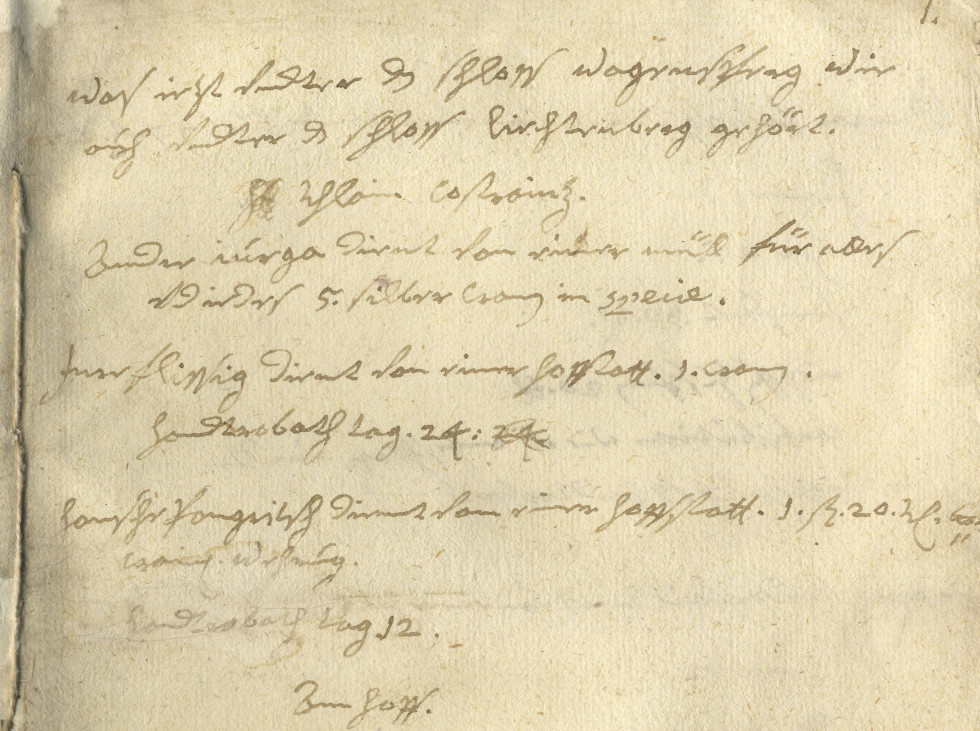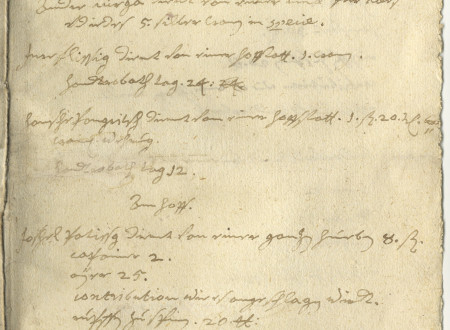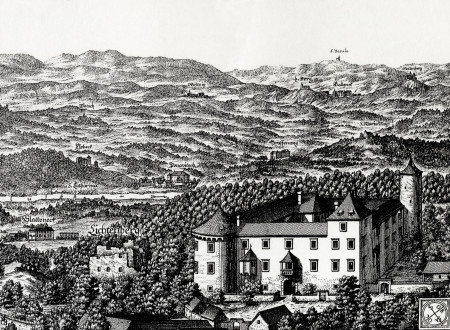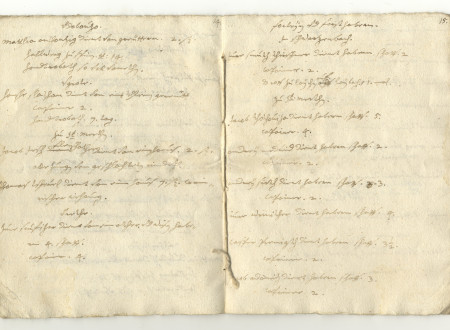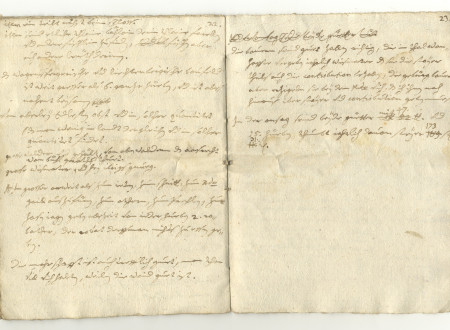Urbarium of the Bogenšperk and the Lihtenberk Castles by Johann Weichard Valvasor
Urbarium of the Bogenšperk and the Lihtenberk Castles
330 years ago, in January 1684, a ghost appeared on several occasions to the cook Anna and a number of other people in the Novi dvor and the Stari dvor manors near Radeče. It was the ghost of the late Maria Elisabeth Countess of Gallenberg, whose path to heaven had been blocked by the decades old injustice »worth« 60 Gulden. The only thing that could bring salvation to the restless spirit of the Countess was to say thirty masses at the altar of St. Anthony of Padua in the nearby village of Jagnjenica. These exciting events are described by Johann Weichard Valvasor (1641-1693) in his celebrated work The Glory of the Duchy of Carniola. Valvasor is also the writer of the urbarium presented here. Its personal note and the fact that it was written by the landlord himself – and not by the steward as was usually the case – make it rather unique. Among more than two thousand urbaria kept in the fonds and collections of the Archives of the Republic of Slovenia no other such urbarium has so far been found.
The Bogenšperk castle, where The Glory was being written at the time, together with the ruined Lihtenberk castle were purchased by Valvasor and his young wife Anna Rosina Graffenweger on September 27, 1672. The price for the two castles with their respective estates and for the estate of the neighbouring castle Črni potok, purchased on the same day, was 20,000 Gulden. Unfortunately, Valvasor was forced to bid farewell to both castles twenty years later due to heavy debt. Selling them in the autumn of 1692, he moved to Krško, where he died a year later.
Around 1680, the united Bogenšperk and Lihtenberk estates included 18 farms (Huben) with 23 serfs. The number of those who owned minor property units, such as a mill, Hofstätte, cottages and Gereute , was slightly higher, i. e. 26 in total. In addition to the income from his manorial land, Valvasor was also entitled to the Vogtei (advocate fee) and Forstrecht (compensation fee for collecting wood from the lord's forest) paid by 38 subjects bound to the manors not owned by Valvasor. Valvasor’s serfs paid most of their fees in cash; 4 to 10 Gulden per farm and 2 to 5 Gulden per half a farm. A smaller part was usually paid in kind (chickens, capons, eggs and flax). As to work obligations, the serfs could make payments in exchange for loading the goods, and were expected to spin or provide yarn. Some of them had to till the lord's soil either by themselves or with their stock. A unique position was held by the serf on the so-called fishing farm in Breg near Litija; he was allowed to pay his entire fee in fish caught in the Sava. Among the non-domestic serfs, we should mention vineyard owners in Nova Gora, situated about an hour’s walk away from Bogenšperk (according to Valvasor).
All 23 pages of the urbarium as well as the inserted two sheets reveal Valvasor's hand. The nature of writing on pages 1 to 19 is somewhat different from that on pages 20 to 23 and the two sheets. While the first part is distinctly “urbarial” – stating duties and obligations of individual serfs – the other part is more narrative, reminiscent of Valvasor's The Glory. Particularly interesting is a description of the freshwater fishing right in the brooks of Kostrevnica and Reka, both of them being well known for their abundance of different kinds of fish and fine crabs. It is from this description that we learn about the yearly journey of the fish from the Sava into these two brooks to spawn here; during that time fishermen were able to catch as many as several thousand fish at a time. Valvasor also commends fruit in the so-called manorial field, which he claims to be one of the most productive areas in Carniola.
Like subjects of other landlords, Valvasor's serfs – described by him as good – had to carry the burden of tax and contribution to the Province. Valvasor says that peasants in the valleys tried to make the obligation less heavy by letting out their pastures, while the ones in the hills bred Valvasor’s stock. The use of the first person singular confirms beyond doubt that the writer of the urbarium is indeed Valvasor. The personal pronoun ich is encountered several times in the urbarium and in the inserted sheets.
Lilijana Žnidaršič Golec


